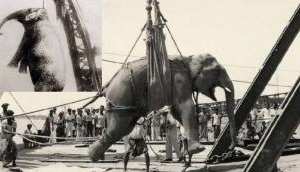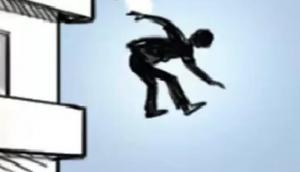The uncertain origins of the modern marathon

Last November, I ran my first marathon, the “Athens Authentic”. I did it mainly because I wanted to follow in the footsteps of the world’s first marathon runner – the ancient Athenian messenger Pheidippides.
The story, as I knew it, went as follows. After their victory over a Persian invasion force at the border village of Marathon, the Athenians sent a messenger called Pheidippides to deliver the news to the city authorities. After running the 42 kilometres back to Athens, Pheidippides gasped “we’ve won!” (nenikēkamen) and promptly died of exhaustion.
It’s a great story, but was it true? The more I looked into it in the weeks leading up to the race, the less certain I was. Was I about to run 42km for a lie?
Different sources and different stories
Our best source for the events of 490 BC, the fifth-century historian Herodotus, doesn’t mention a messenger being sent from Marathon after the battle. He does say, though, that a runner called Pheidippides (or Philippides, in some manuscripts) was sent to Sparta to ask for help before the battle.
This trip is commemorated in the Spartathlon, a 246km event that I haven’t run – and never will.
Our next-oldest source is the fourth-century-BC intellectual Heraklides Pontikos. He apparently did mention a Marathon runner, but gave his name as Thersippos – at least according to the first-century-AD moralist Plutarch.
Plutarch himself is the earliest author to tell the story of a messenger from Marathon dying from exhaustion after proclaiming victory. But his messenger is called Eukles – and his dying word is nikōmen (we win).
The first time we hear this story with a messenger called Pheidippides (or Philippides) is in Lucian, and by that time we’re in the second century AD, around 600 years after the Battle of Marathon. The runner says nikōmen in that version too.
What to make of the different sources
Herodotus was closest in time to the events. And since he does tell the story of Pheidippides’ run to Sparta and back, he would surely have added in the story of the runner’s death if he had known about it.
But if Pheidippides didn’t run the first marathon, did someone else?
Our next candidate is Eukles, the name Plutarch tells us is given to the Marathon runner by the majority of historians. But here there’s an important detail: Eukles, according to Plutarch, ran from the battle “warm, with his weapons”.
If that’s right, Eukles would have run the first marathon after fighting for three hours or so in a desperate battle for his city’s survival. Not only that, but he would have done so bearing the traditional arms and armour of a Greek hoplite (heavy infantryman): spear, shield, helmet and (if he could afford it) breastplate. The whole panoply would have weighed ten or 20 kilograms, up to about one-third of the body weight of the average classical Greek.
Needless to say, this is something else I haven’t done.
Where does this leave Thersippos, the name given by Heraklides Pontikos?
It’s possible, as the Greek historian Christos Dionysopoulos has suggested, that there was a second runner, sent out the morning after the battle when the Athenians realised the Persians that they had pushed back onto their ships could simply use them to sail down the coast and attack Athens through its traditional harbour. That second runner may have been Thersippos.
But the strategic situation they were in was probably clear to the Athenians even as the battle ended. Someone would have to get to Athens before the Persians did, to reassure the populace that the Athenian army was still standing – and hence that there was no reason to surrender the city to the Persians.
They also needed to signal to any would-be defectors to the Persian side that it was the Athenians who were still calling the shots in Athens.
Eukles’ announcement of an Athenian victory – perhaps with his final breath – would have gone part of the way to achieving these goals.
But to really reassure people, and send a strong signal to potential “Medizers” (Persian sympathizers), the army would need to make an appearance in person. So, the Athenian hoplites, fresh from the most important battle of their lives, marched the 40km or so back to Athens, just in time to scare off the Persian fleet, which finally headed back to Persia.
Like Eukles, the Athenian hoplites would have had to bring along their weapons, both because these were valuable possessions and because they needed them to intimidate the Persians. Unlike Eukles, the Athenians probably didn’t run.
The British historian N.G.L. Hammond reckoned they could have walked the distance in six or seven hours – which is not that much longer than it took me to run it.
How long was it, really?
Speaking of the distance, what was it exactly?
I ran 42,195 metres, the standard length for a marathon, and I felt every metre afterwards. But if that was the distance that Eukles ran, why does the modern race make you run a 2km diversion around the burial monument of the Athenians?
The answer is because the modern marathon distance is only loosely based on the distance Eukles ran. The modern distance comes from the 1908 London Olympics, where competitors ran from Windsor Castle to White City Stadium, and then a bit further along the track to finish in front of the royal box.
The 1908 race was thus longer than the first Olympic marathon run in 1896. That course was 40km, the distance between the village of Marathon and the Panathenaic Stadium, where I finished my race.
The annual Athens “authentic” marathon didn’t begin until 1972. By that point 42,195 metres had long become the standard distance. That’s why I had the wonderful opportunity of running 2km extra around the tomb of the Athenians.
So, where did this all leave me as I trudged up the road from Marathon to Athens? (“Up”, by the way, is very much the right word.)
I wasn’t following in the footsteps of Pheidippides – thankfully, since his run to Sparta and back was much longer than the one I was doing. I might have been following in the footsteps of one named Thersippos, but I was most likely retracing the steps of a man called Eukles, albeit without carrying one-third of my body weight in armour.
But something else occurred to me as I eventually slowed to a walk for part of the course. I may have been doing so because I was tired, but I was also making my journey more similar to that of the Athenian hoplites in 490 BC. They walked briskly, after defeating an absolutist invasion force that was seeking to crush their nascent democracy.
![]() Some 2,500 years later, I run-walked slowly over the same ground, unarmed and without a worry on my mind except the next research deadline. And that was good enough for me.
Some 2,500 years later, I run-walked slowly over the same ground, unarmed and without a worry on my mind except the next research deadline. And that was good enough for me.
James Kierstead, Lecturer in Classics, Victoria University of Wellington
This article was originally published on The Conversation. Read the original article.
First published: 28 August 2017, 17:38 IST





![BJP's Kapil Mishra recreates Shankar Mahadevan’s ‘Breathless’ song to highlight Delhi pollution [WATCH] BJP's Kapil Mishra recreates Shankar Mahadevan’s ‘Breathless’ song to highlight Delhi pollution [WATCH]](http://images.catchnews.com/upload/2022/11/03/kapil-mishra_240884_300x172.png)

![Anupam Kher shares pictures of his toned body on 67th birthday [MUST SEE] Anupam Kher shares pictures of his toned body on 67th birthday [MUST SEE]](http://images.catchnews.com/upload/2022/03/07/Anupam_kher_231145_300x172.jpg)






